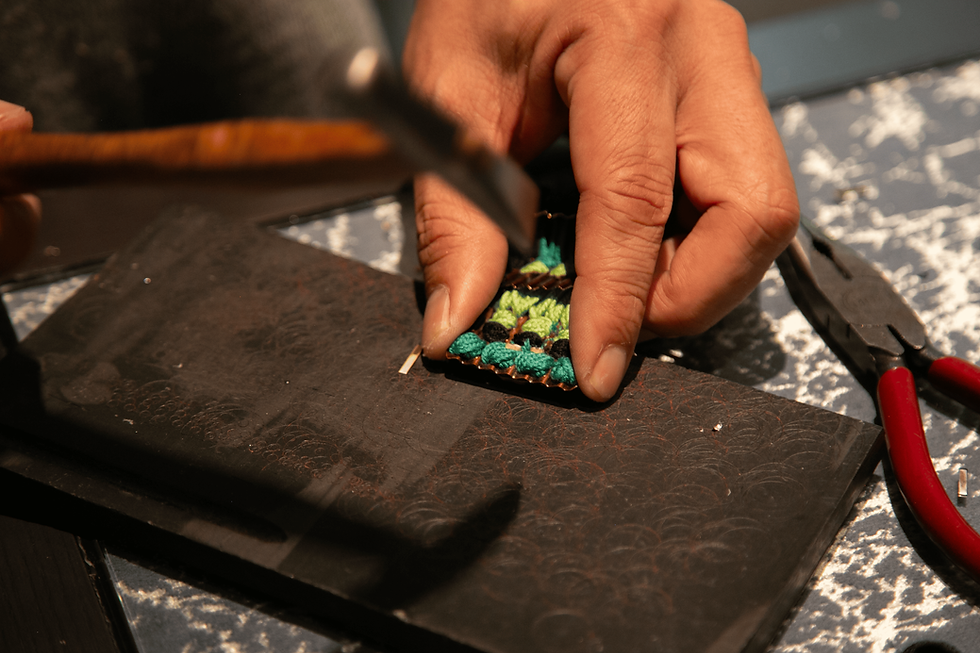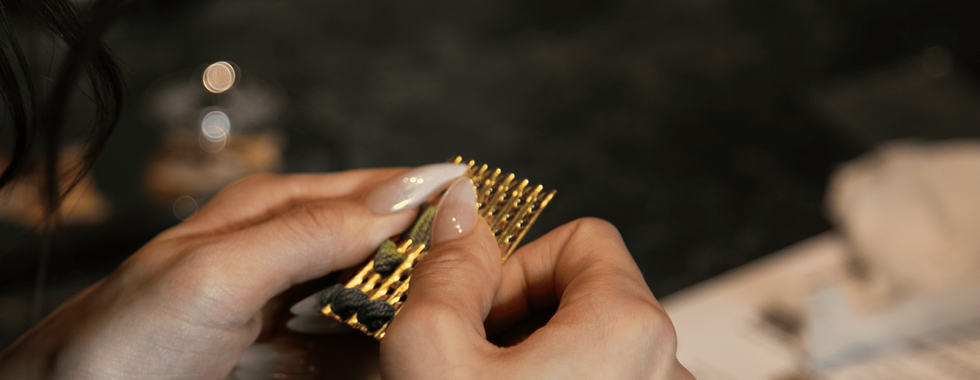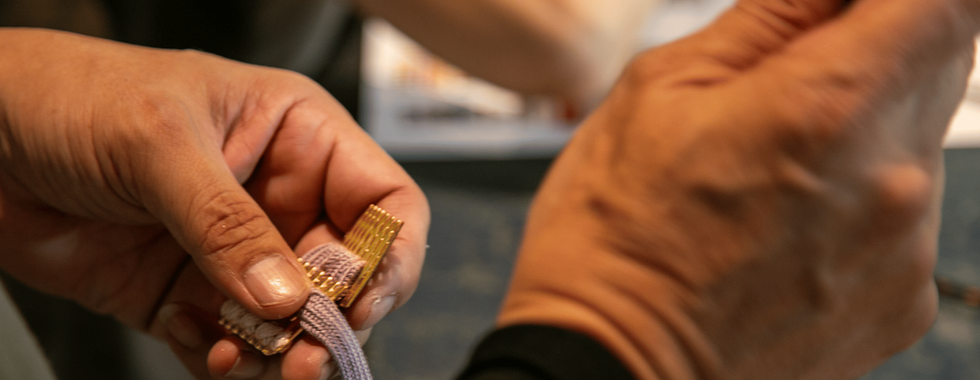Kyoto Armor Workshop – Feel the Spirit of the Samurai Through Craft
- 智晴 岡林
- Jun 25
- 3 min read
The Timeless Legacy of Kyoto Armor
In the quiet alleys of Kyoto’s Kamigyo Ward lies Bukyu, a renowned workshop where a father-and-son duo have inherited the art of Kyo Katchu—Kyoto-style armor. Once worn by samurai and now treasured as cultural artifacts, Kyo Katchu is especially celebrated during Tango no Sekku (Boys’ Festival), when decorative helmets are displayed to wish for boys’ health and prosperity.Each piece crafted at Bukyu is a marvel of precision and beauty, often comprising hundreds or even thousands of individual components meticulously assembled by hand. Beyond simply preserving tradition, Bukyu is also innovating by creating refined interior decor pieces that seamlessly blend historical aesthetics with modern lifestyles.

Discover the Art of Odosh —A Living Craft
At the heart of this hands-on workshop is the traditional Odoshi technique—a sophisticated lacing method used to connect metal plates in armor-making. Using specially woven cords, participants will learn how to thread and tie the plates with precise tension and rhythm, ensuring both structural integrity and refined appearance.Guided by Mr. Saji, Bukyu’s esteemed assembler (Yosei), you will be taught every step of the process—from choosing cords and mastering proper tension to elegantly hiding seams and applying adhesive for finishing. Instruction is supported by live demonstration, verbal guidance, and visual aids including projection when available, offering you an intimate and immersive learning experience.

Create Your Own “IDOMU” Armor-Inspired Strap
During this experience, you’ll create a Kyo Katchu-inspired strap from Bukyu’s original brand, IDOMU. This compact strap incorporates an actual armor component called kozane—a small iron plate traditionally used in real armor—and transforms it into a refined and personal keychain.With full creative freedom, you’ll select your cord colors and construct your own unique Odoshi lacing pattern under Mr. Saji’s attentive guidance. The finished strap is yours to take home—a one-of-a-kind, wearable work of craftsmanship that blends tradition with contemporary design.If you complete your crafting ahead of time, you’ll have the rare opportunity to share tea and conversation with Mr. Saji. This informal dialogue offers deep insights into the symbolic meaning of the kabuto (helmet), the traditions of Tango no Sekku, and the spirit behind Japanese craftsmanship.

The Historical Significance of the Samurai Helmet
More than just protection in battle, the kabuto helmet evolved over centuries into a powerful symbol of identity, status, and artistic expression. During the Edo period, it became a central ornament in Boys’ Festival displays—embodying wishes for strength, health, and the protection of children.Bukyu’s helmets continue this legacy, honoring historical forms while reinterpreting them for the modern age. Each piece reflects the workshop’s deep respect for samurai culture, reimagined as elegant, timeless decor for today’s homes.In feudal Japan, samurai helmets were far more than protective gear—they were deeply personal emblems of identity, values, and aspiration. The crescent moon of Date Masamune symbolized hope and ambition. Sanada Yukimura’s six coins declared a warrior’s readiness to face death. Uesugi Kenshin’s sun and moon represented devotion to divine protection, while Tokugawa Ieyasu’s fern crest conveyed prayers for peace, longevity, and prosperity.These powerful motifs were not only visual spectacles on the battlefield, but deeply rooted in each warlord’s convictions. Today, they live on in kabuto displays and artisan-crafted pieces like those made at Bukyu. When you create your own Odoshi strap or decorative charm, you carry on this warrior tradition—transforming ancient symbols into personal talismans of courage and intention for the modern world.

























Comments